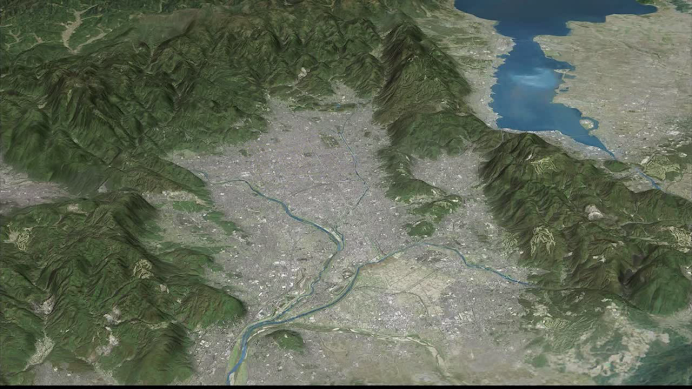
The question of which Buddhist sect did Saiji and Toji belong to when Heian Kyo was established came up at our last meeting. According to Paul Groner in, Saicho: The Establishment of the Japanese Tendai School
"These were official temples established to protect the capital, not centers for Nara schools. In fact they were probably built to be used by the bureau of Buddhists and Foreigners (genbaryo or koroji) as centers for entertaining guests." In 823 when Kukai was given control over Toji it became Shingon Monastic Center.
The Office of Monastic Affairs was moved from Yakushiji in Nara to Saiji in Kyoto in the 800's. Sometime in late Heian, when Saiji was damaged by fire, the office of Monsatic Affairs was moved to Toji. Saiji seems to have slowly faded out of history at that point.
Information on Saiji as head of Monastic Affairs can be found here: Ryōgen and Mount Hiei: Japanese Tendai in the Tenth Century, Paul Groner
Finally, Onjoji. This is also know as Miidera, the temple overlooks Lake Biwa. Founded in 764, Onjoji (commonly known as Miidera) Temple is the headquarters of the Jimon sect of Tendai Buddhism and was once a rival of the mighty Enryakuji Temple on Mount Hiei.
Question? Can anyone find what Buddhist school Onjoji was at its founding?

Regarding Saiji, that's very interesting that it had no affiliation apparently but was more an admin centre. I love the title Bureau of Buddhists and Foreigners. It suggests a stand-offish attitude to the religion to me; Kammu was a Confucian wasn't he, and there was a Shinto shrine in his palace I believe.
ReplyDeleteAs for Onjoji, I wonder what order it belonged to when it was founded. Obviously not Tendai, which had not yet started. Perhaps it belonged to one of the Nara sects and its change in affiliation is an indicator of the power of the new Tendai sect operating out of Hiei.
The Jimon sect of Tendai incidentally appears to be nothing to do with doctrinal matters but a simple power struggle of Enryakuji and Miidera for supremacy deriving from rival claims. They had armed conflicts about not being invited to festivals or events, and in the Genpei War Enryakuji sided with the Taira and Miidera with the Genji.